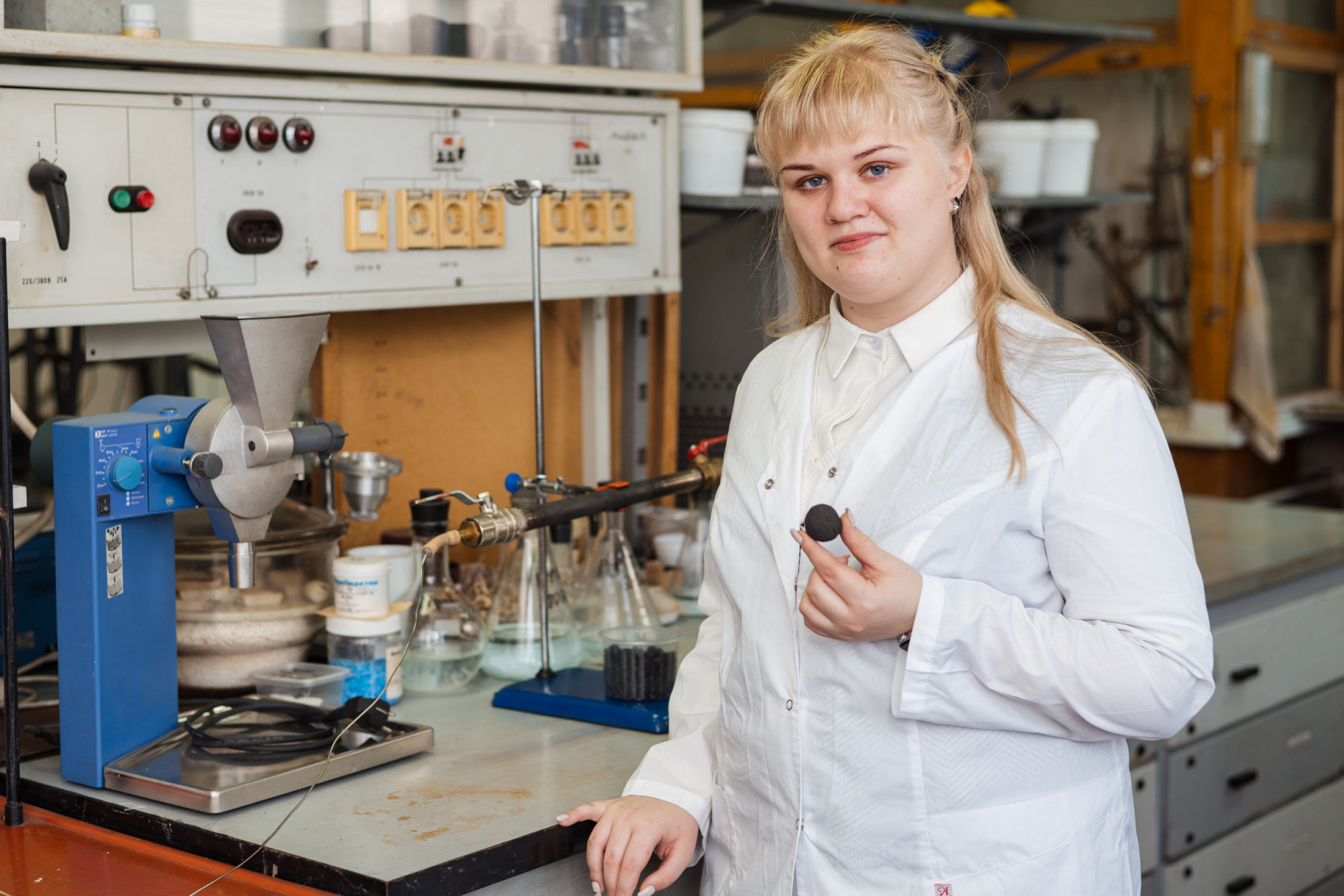
- Kuzbass
- University
- Education
- Science and Innovation
- Life at KuzSTU
- Kuzbass-300 Satellite

Ekaterina Loskutova is a first-year student at the Institute of Chemical and Oil and Gas Technologies. In the very first year at the University, she was fascinated by science - the student is interested in ecology, and in particular, in reduction of the carbon footprint. Scientific efforts are already yielding first results - Ekaterina's project took third place in the Novice Researcher nomination of the Best Student Innovations competition of the Student Scientific Session.
The carbon footprint is the total amount of carbon dioxide and methane that is released into the environment as a result of human activities. Accumulating in the atmosphere, these gases increase the greenhouse effect, which leads to global warming and climate destabilization on the planet. The difficulty lies in the fact that almost any human activity in one way or another leads to carbon emissions.
At the moment, science knows several methods for capturing carbon dioxide: pumping into underground "reservoirs", membrane extraction, electrical methods, trapping with sorbents, etc. Many of the existing methods are quite expensive to use, hence, it is required to create new methods for capturing carbon dioxide. For instance, spent carbon sorbents which are unsuitable for further regeneration, but capable of retaining carbon dioxide in the pores can be used as a cheap adsorbent, - says Ekaterina Loskutova.
In her scientific project, Ekaterina is looking for a way to bind carbon dioxide with carbon sorbents in order to eventually obtain synthesis gas, which is used in the production of electricity and heat. Thus, the successful adsorption of carbon dioxide solves the environmental problem with an energy outlook.
Ekaterina created a special installation for capturing carbon dioxide with carbon sorbents which functions as follows: after been enriched with carbon dioxide, the sorbent is loaded into a tube furnace, where, under appropriate parameters, synthesis gas is formed from the raw material. Experiments have shown that sorbents are capable of adsorbing carbon dioxide, however under normal conditions the percentage of collected carbon dioxide is small (up to 10% of the mass of the sorbent). The student has reviewed this problem and found out that this percentage is affected by the concentration of carbon dioxide, ambient temperature, pressure and other factors, with the consideration of which the adsorption rate can be increased.
Now that Ekaterina is convinced that carbon sorbents really hold carbon dioxide in their pores, she will continue her research. She plans to create ideal conditions for the binding of carbon dioxide by carbon sorbents and increase the volume of collected carbon dioxide.